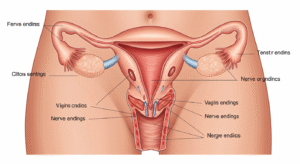Body image is a complex and multifaceted concept that encompasses how individuals perceive, feel about, and behave towards their own bodies. It is influenced by various psychological, social, and cultural factors, shaping one’s self-esteem, mental well-being, and overall quality of life. To comprehend body image fully, it’s crucial to delve into its psychological and cultural dimensions.
Psychologically, body image involves both perceptual and affective components. Perceptually, it refers to the subjective evaluation of one’s body size, shape, and appearance. This evaluation may or may not align with objective reality; individuals can have distorted perceptions of their bodies, seeing themselves as larger or smaller than they actually are. Affective aspects of body image involve the emotions and attitudes one holds towards their body. Positive body image entails acceptance, appreciation, and comfort with one’s physical self, while negative body image manifests as dissatisfaction, shame, or anxiety related to appearance.
The development of body image starts early in life and can be influenced by various factors. Family dynamics, peer interactions, media exposure, and societal ideals all play significant roles. For instance, children observe and internalize parental attitudes towards bodies, which can shape their own perceptions. Peer relationships, particularly during adolescence, heavily impact body image as individuals compare themselves to others and seek social acceptance. Media, including advertising and entertainment, often portray narrow standards of beauty that contribute to unrealistic body ideals and dissatisfaction among viewers.
Furthermore, cultural contexts deeply influence body image. Different cultures have distinct norms and values regarding body ideals, which impact how individuals perceive themselves. For example, Western cultures often emphasize thinness for women and muscularity for men, promoting specific body shapes as ideal. In contrast, cultures may differ in their beauty standards, with some celebrating fuller figures or other physical attributes.
Body image can significantly impact mental health and well-being. Negative body image is associated with increased risk of developing eating disorders like anorexia nervosa or bulimia, as well as depression, anxiety, and low self-esteem. The constant pursuit of an idealized body can lead to unhealthy behaviors such as extreme dieting, excessive exercise, or cosmetic surgeries.
Improving body image requires a holistic approach that addresses psychological, social, and cultural aspects. Therapeutic interventions like cognitive-behavioral therapy (CBT) can help individuals challenge negative thought patterns and develop healthier attitudes towards their bodies. Group therapy and support networks also provide opportunities for individuals to share experiences and receive validation. Additionally, promoting diversity in media representation and challenging narrow beauty standards can foster more inclusive and positive body images across society.
It’s essential to recognize that body image is a deeply personal experience shaped by individual and collective influences. Each person’s journey towards a healthier body image will vary, but fostering self-acceptance and promoting body diversity are crucial steps towards creating a more inclusive and body-positive society.
In conclusion, understanding body image involves recognizing its psychological and cultural dimensions. It is a complex interplay of perceptions, emotions, and behaviors influenced by societal norms, media representations, and personal experiences. By addressing the psychological factors underlying body image and challenging unrealistic cultural ideals, we can promote healthier attitudes towards bodies and ultimately enhance well-being and self-acceptance for individuals of all shapes and sizes.






